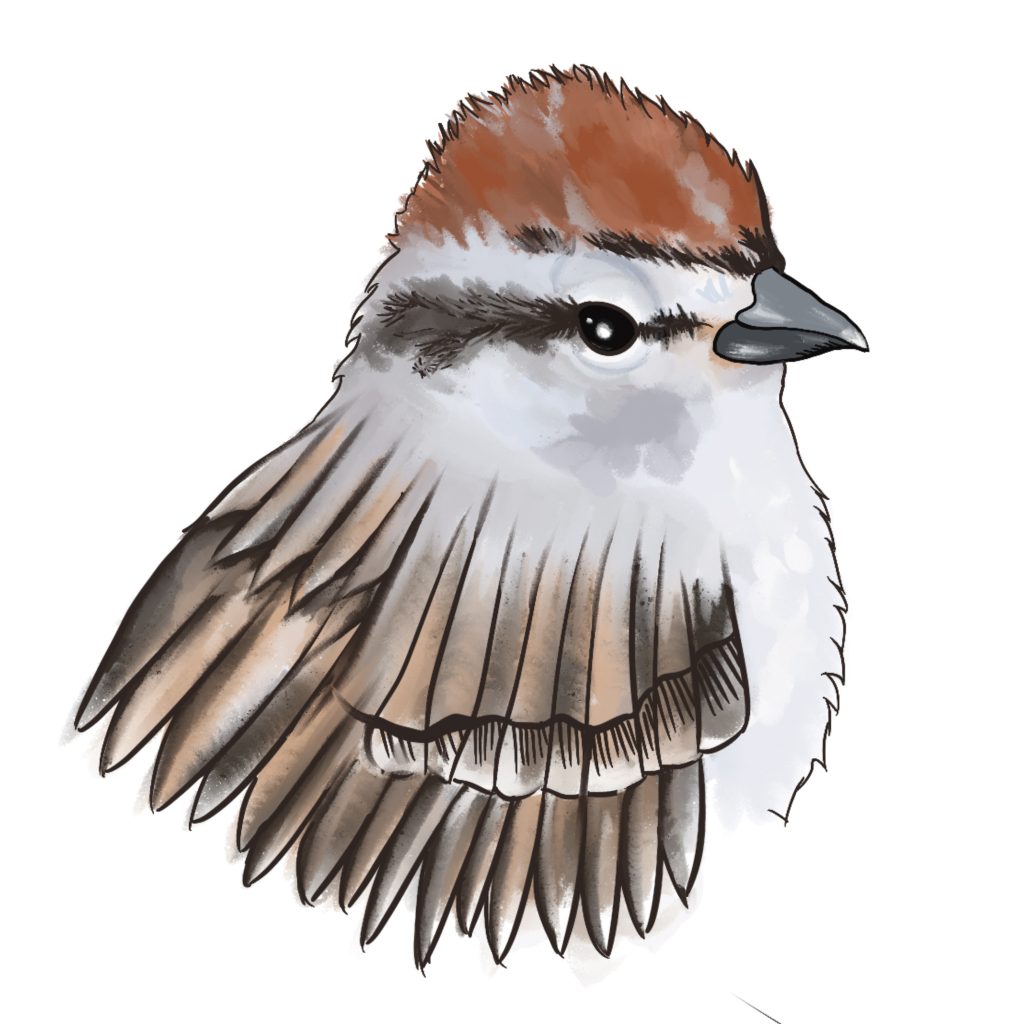
The first weeks of spring have seen many of Binghamton University’s animal species shaking off the winter cold, and if you’re a light sleeper, you’ve probably woken up recently to birdsong. According to Julian Shepherd, an associate professor of biological sciences who teaches Biology 379: Biology and Conservation of Birds, there are about 55 different bird species living on BU’s campus, and students in Shepherd’s class learn to identify 32 species by song. About one-third of local bird species stay on campus all year long, and others migrate back to the northeast from the south each spring. It’s easy to spot many of them on a hike or a walk to class as the weather becomes more suitable, and for birdwatchers who want to hone their auditory skills, The Naturalists’ Club of Broome County will lead a birdsong class in the Nature Preserve this Saturday. Check out Pipe Dream’s beginner’s guide to campus birds if you’re looking for a unique outdoor challenge once the sun returns.
Chipping sparrow
Appearance: Slender and lightly colored with a reddish cap and a stripe through the eye.
Habitat: Nests in BU’s inner campus, eating from the ground and singing from outer limbs at the tops of small trees.
Sounds: Song sounds like a trill of fast, even notes.
Song sparrow
Appearance: Brown and gray with distinct streaks on the chest.
Habitat: Nests in BU’s inner campus, inhabiting shrubs or wet places.
Sounds: Loud, complex song that consists of both evenly spaced notes and trills.
Raven
Appearance: Large with black feathers, glides through the sky with slow wing beats.
Habitat: Tend to be found in areas inhabited by humans, nesting on rooftops in the Newing College and Dickinson Community area.
Sounds: They do not sing, but call a resounding croak.
Red-winged blackbird
Appearance: Males are black with bright red and yellow shoulders, while females are striped a dull brown and are usually larger.
Habitat: Found around moist areas, on cattails or on telephone wires. They nest behind east campus and can often be found by the bridge over the Nature Preserve pond.
Sounds: Undulating song that usually starts with one note and ends with a trill.
Killdeer
Appearance: About the size of a robin, with a big, round head and big eyes. Long wings and a tapered tail, a white chest with two black bands. Face is patched in white and brown.
Habitat: Nests around the lower playing fields, and can be seen running on the ground.
Sounds: Call is reminiscent of a seagull, but has shorter stops.


